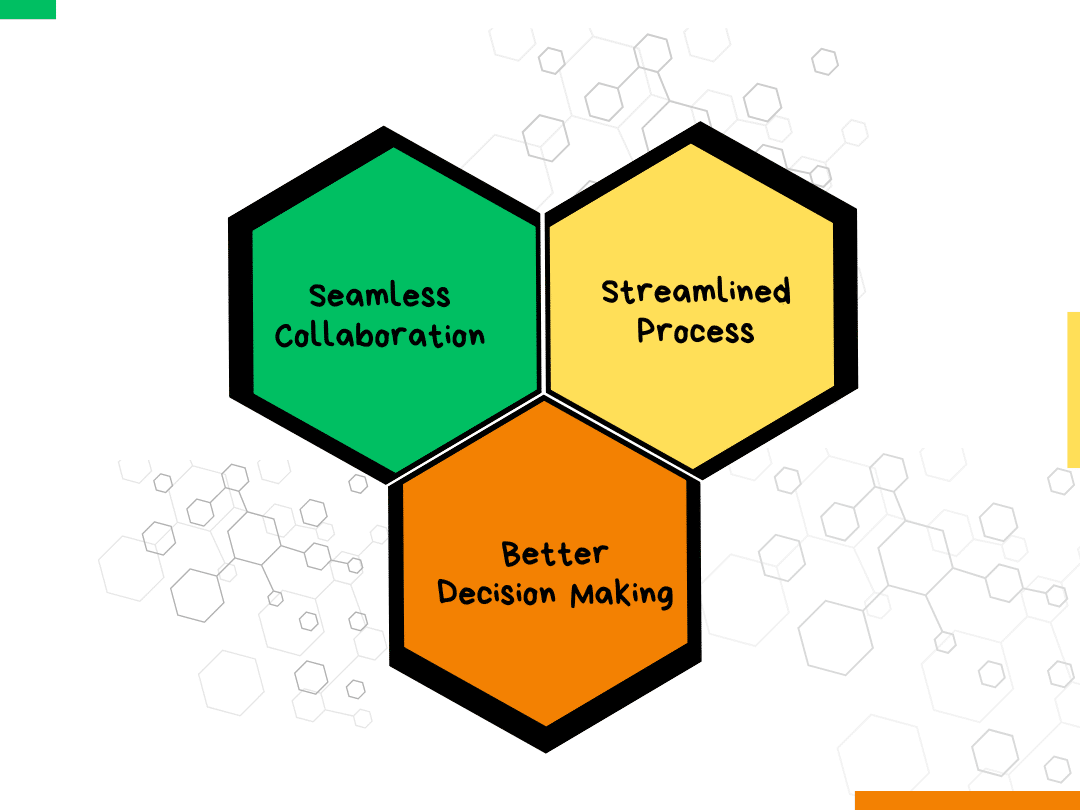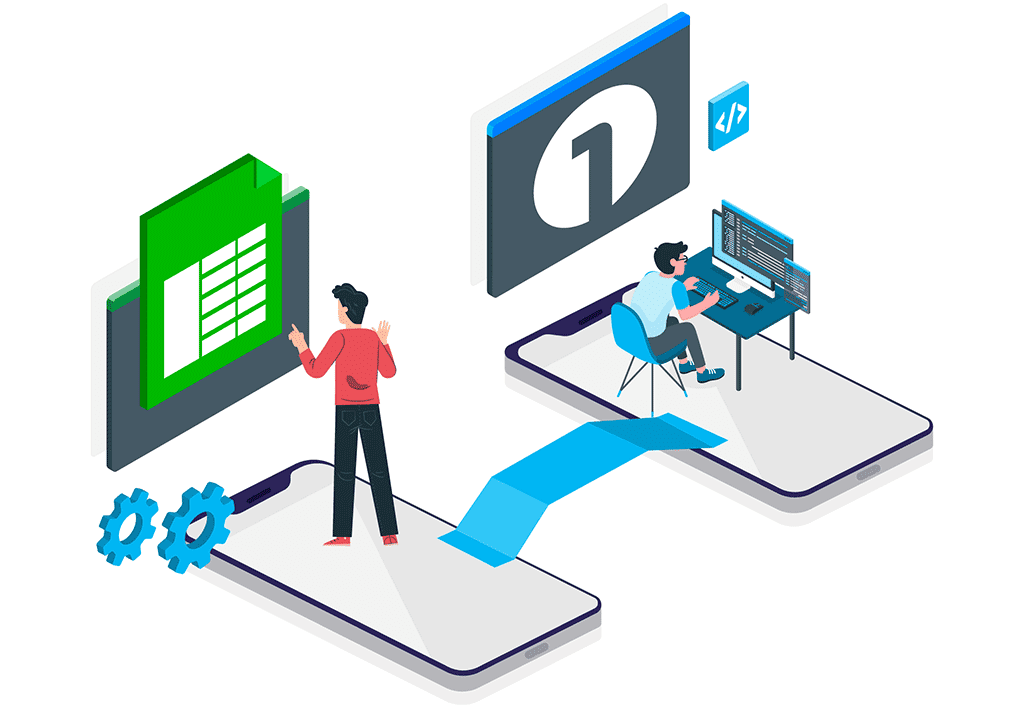THE 5 BEST BUSINESS APPLICATIONS BUILDING PLATFORMS IN 2024
Stay organized, Stay Productive
Share:

Get to know about:
In today’s fast-paced business world, the quest for efficiency and productivity is more fervent than ever. Companies are constantly seeking innovative solutions to streamline operations and enhance collaboration among teams. One such solution gaining significant traction is the development of internal applications without code. It’s remarkable how these internal applications have become integral to modern business operations. No-Code internal apps are catalysts for change, driving organizations towards greater efficiency and effectiveness. With each passing year, their importance only seems to grow.
Recent research suggests a surge in demand for skilled professionals who can build no-code business applications. It’s a testament to their value in today’s market. As we step into 2024, we can’t help but wonder about the individuals who will emerge as leaders in this field. The ones who will push the boundaries of what’s possible and pave the way for future innovations.
It’s an exciting time to witness the evolution of technology and its impact on the way organizations operate.
What are business apps or internal apps?
Internal apps also known as business apps or enterprise apps, serve as indispensable tools within organizations, facilitating streamlined processes, seamless communication, and effective collaboration among employees, teams, and departments. These apps enhance efficiency and connectivity, regardless of physical location by automating workflows, digitizing tasks, and providing features like messaging, file sharing, and video conferencing.
Additionally, internal apps centralize information, offer analytics for informed decision-making, and enable remote work with cloud-based accessibility. They also foster employee engagement through professional development tools, recognition features, and feedback mechanisms.
Overall, internal apps are vital assets for modernizing operations, improving employee satisfaction, and ensuring competitiveness in the digital era, ultimately leading to greater efficiency, productivity, and success.
Why do businesses need internal apps?
Internal apps are instrumental in various aspects, serving as dynamic tools to bolster efficiency, productivity, communication, and collaboration within a company. Here’s why every organization needs business applications:
Streamlined Processes
For optimal efficiency and productivity within the organization, it’s advisable to integrate internal apps into the workflow. By incorporating these tools, you can streamline processes, automate repetitive tasks, and centralize information. Internal apps provide a convenient platform for collaboration among team members and real-time access to relevant data.
Features such as workflow management, task assignment, and notification systems can help prioritize activities and ensure timely completion. Embracing internal apps will not only minimize errors but also reduce cycle times and optimize resource utilization, ultimately leading to increased productivity and cost savings.
Seamless Collaboration –
Internal applications facilitate seamless collaboration within an organization by providing a platform where teams can efficiently work together on projects and tasks. These apps offer features such as shared calendars, task management tools, and document collaboration, allowing team members to coordinate efforts, track progress, and contribute to shared objectives in real-time.
Additionally, internal apps enable team members to discuss ideas, share feedback, and make decisions collectively. By centralizing collaboration tools and information, internal apps promote transparency, accountability, and alignment across teams, leading to improved outcomes and faster project delivery. Overall, internal apps play a vital role in breaking down silos, fostering teamwork, and enhancing productivity within the organization.
Better Decision Making –
Internal apps contribute to better organizational decision-making by providing access to comprehensive data insights and analytics. These apps often include reporting features that compile and present critical metrics and performance indicators in a user-friendly format. By analyzing this data, decision-makers can gain valuable insights into various aspects of the organization’s operations, such as sales performance, customer behavior, or project progress.
List of top 5 internal app builders
Here is the list of top 5 business apps building platforms that can be implemented quickly –
1. Codeless ONE
Codeless ONE revolutionizes internal application development with its no-code intuitive interface, customizable pre-built templates, and powerful integration capabilities.
By eliminating the need for traditional coding, it accelerates development cycles, reduces costs, and empowers non-technical users to create customized applications tailored to their specific needs.
It comprises of features like workflow automation, role-based access control, and responsive design, Codeless ONE enables organizations to streamline processes, improve productivity, and adapt quickly to evolving business requirements. Its scalability, accessibility, and compliance features make it a versatile solution for building a wide range of internal applications, from project management to CRM, while ensuring data security and regulatory compliance.
Overall, Codeless ONE provides a user-friendly and cost-effective platform for driving innovation and digital transformation within organizations.
2. Microsoft Power Apps
Microsoft Power Apps is well-suitable for mid-sized to large enterprises with dedicated IT resources or budgets for software development. Smaller businesses may find the learning curve and cost constraints challenging but can still benefit from Power Apps’ capabilities with proper training and planning.
Overall, Microsoft Power Apps offers a versatile solution for organizations seeking to innovate and optimize their operations through custom application development.
3. Quickbase
Quickbase provides businesses with a flexible and customizable platform for creating applications tailored to their specific needs, fostering agility and innovation within teams.
Its low-code approach empowers users to build solutions without extensive programming knowledge, accelerating development cycles and driving operational efficiency. Nevertheless, navigating the platform’s intricacies and maximizing its full potential may require dedicated time and resources, posing a potential challenge for organizations seeking rapid implementation. Additionally, the cost of subscription-based access might be a deterrent for smaller enterprises with limited financial resources.
4. Nintex
Nintex offers a comprehensive suite of workflow automation tools designed to streamline processes and enhance productivity within organizations. Its user-friendly interface and drag-and-drop functionality make it accessible to users with varying levels of technical expertise, enabling rapid deployment of automated workflows across department.
However, the scalability and performance of Nintex solutions may be impacted by the complexity of workflows and the volume of data processed, requiring careful planning and optimization to ensure optimal performance. Additionally, the cost of licensing and maintaining Nintex solutions may pose a barrier for some organizations, particularly smaller businesses with limited budgets.
5. Appsheet
AppSheet is a no-code application development platform that empowers users to create custom mobile and web applications without writing a single line of code. Its intuitive interface and drag-and-drop functionality make it accessible to users of all skill levels, allowing them to quickly prototype and deploy applications tailored to their unique business needs. With its support for data integration from various sources such as Google Sheets, Excel, and databases, AppSheet enables users to leverage existing data to build powerful applications that automate processes and improve productivity.
While AppSheet offers a range of features for app development, more complex applications may require additional customization or integration with third-party services, which could potentially increase development time and complexity. Additionally, while the platform offers a free tier for basic usage, more advanced features and higher usage levels are available through paid subscriptions, which may be a consideration for organizations with limited budgets.
4 Points to consider before choosing the tool
When choosing a tool, several factors are crucial to consider to ensure it meets your needs effectively. Here are some examples:
Learning Curve: Evaluate how easy it is to learn and use the tool. A steep learning curve may require more time and resources for training, whereas a tool with an intuitive interface and clear documentation can facilitate faster adoption.
Customization Options: Assess the level of customization the tool offers. A flexible tool that allows for extensive customization enables you to tailor solutions to your specific requirements, whereas a rigid tool may limit your ability to meet unique business needs.
Integration Capabilities: Consider how well the tool integrates with your existing systems and data sources. Seamless integration with other applications and services enhances interoperability and workflow efficiency, reducing the need for manual data entry and duplication.
Scalability: Determine whether the tool can scale to accommodate your organization’s growth and increasing workload. A scalable tool should be able to handle growing data volumes, user bases, and complexity without compromising performance or functionality.

Take advantage of no-code to get ahead of your competitors.
No-Code development platform for all your unique projects.










